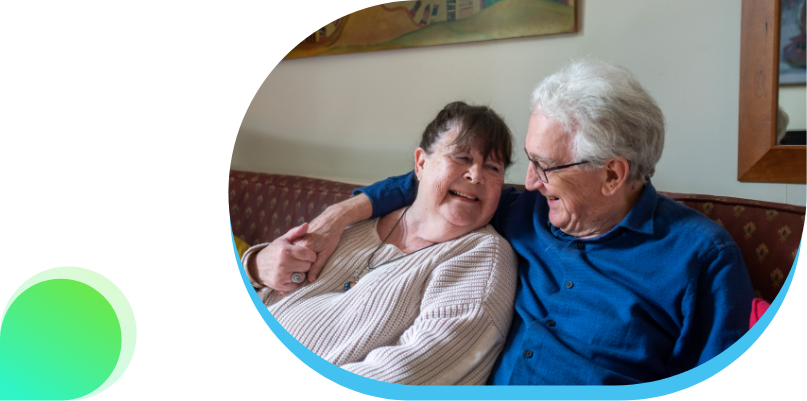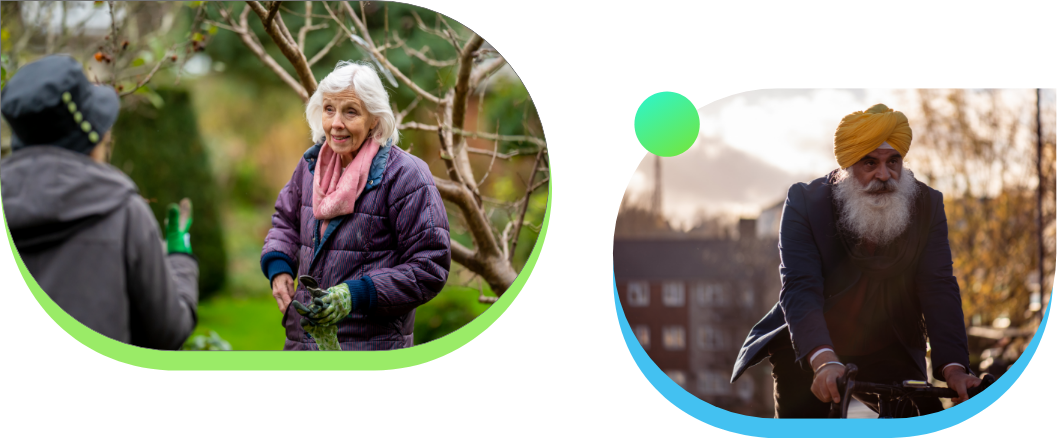How connected care technology is transforming the traditional care model
We interviewed Nathan Downing from TSA to learn the latest about connected care technology and its impact on the sector.

The care sector is undergoing a massive shift in emphasis due to connected care technology.
Traditionally, care for older people has been reactive, with technology limited to alarms and pendants that sound alerts if a person has fallen, for example. Now, the focus is on a proactive service to prolong an older person’s independence, helping them lead a fulfilling life wherever they choose.
The TSA is the UK’s industry and advisory body for technology-enabled care. It aims to increase the uptake of digital solutions and TEC in health and social care. Nathan Downing is the TSA’s Director of Membership and Consultancy Services. We sat down with Nathan to get his thoughts on how TEC is changing the sector, when the tech will become the mainstream and his hopes for the future.

Transformation
Fall detection technology delivers significant benefits to all sides, including:
- The older person can experience fewer falls and avoid hospital stays
- They remain home-based and independent living for longer
- Their family get reassurance that their loved one is being looked out for when they can’t be there
- There are cost savings to the NHS with fewer ambulance callouts and hospital stays
- Supporting staff in care homes can manage hidden falls and provide better overnight monitoring
We asked Nathan about how organisations are working towards these benefits.
“Local authority, technology or telecare services are trying to understand when to intervene, predominantly reacting to crises, but more over time starting to think about how we use the information to tell us ahead of an older person having a fall or somebody having a UTI. How do we then give that information to the GP before it happens?
“I think that the service side of things is crucial, and it is a moving feast. It’s very hard to stop doing the reactive stuff because you’re supporting people who could be about to fall over or have fallen over. You can’t just stop everything and move to a totally different proactive model. You’ve got to morph it over time and offer both.
“What’s going on is more like a virtual care model than it is anything to do with technology. We need to see this as part of their care package, where they traditionally have physical care coming in, but a lot of it is for supporting people - reducing isolation or helping with their mental health and well-being or medication checks. It’s that blended virtual and physical care model aligned to people’s individual personalised outcomes.”

Tipping point
Many local authorities and care providers have begun to test and implement connected care technology for the people they look after. However, it’s still at an early stage. When does Nathan think the tipping point will happen when connected care becomes the norm?
“We’re seeing the technology-enabled care sector being far more relevant and getting listened to in government departments by people looking at funding. The Department of Health and Social Care does have funding with the Adult Social Care Technology Fund. They’re starting to see the role that technology-enabled care services can play in supporting people to live in the destination they want, whether that’s coming from the hospital all the way through to home or into group living.
“The next three years will be crucial as we start to understand how we can use more enabling technologies and more proactive support driven by insights but move it into the care delivery world. So rather than being specific technology and healthcare services doing this, how do we start to get care providers to be comfortable knowing that this type of technology and service can be part of their offer?”
The need for collective efforts
If Nathan is right and the social care world is moving towards proactive and preventative approaches, then the sector will surely have to work harder to build understanding.
“Everybody’s commissioning care providers at different times and have contracts that might be anywhere between three to seven years, so you’ve got to allow time to change. The other consideration is how you work more closely with the health system. Integrated care systems are designed to do that. So how do we embed that more?
“The challenge is for all those technology companies to really think about how they could collectively influence the commissioners and services to create that bigger cake. I believe that if you work together, you can help commissioners understand how they can change the way that they deliver these services. Creating a common language is a key part of the guidance we have produced so far. Next, we need to figure out how we can come together to try and agree on a framework for measuring the benefits.”

The next 12 months
What does Nathan believe the sector needs to do to prove the value of data and intelligence in the short term to facilitate the growth of connected care and guarantee longer-term success?
“I would hope people will be able to adopt or certainly make the best use of a specification that allows them to think about how to commission this. It’s an ongoing dialogue with their health colleagues, housing and social care around how we work more smartly together to fund this, so it’s not seen as just constant pilots that don’t get anywhere.
“We should have this approach almost like a common data set for proactive preventative care. You can measure 70 different things, but can we all measure the same ten things so we can then scale it up across all these different pilots and programs? Then we can say, ‘This is how people are supported, and this is the impact if we have that power.’
“There’s a huge amount of talk now and over the next 12 months around virtual wards, supporting people that would have always been the hospital, in their own home. There’s not so much talk about the virtual care side of things. So, in 12 months, if we get that right, we’ll have that combined conversation in one entity, almost to combine service using technology for different areas into one data platform. I don’t think that’s too grand a vision.”
Nathan ended the conversation this way:
“Unfortunately, there are fewer carers to deliver the support that older people need. Therefore, we need to adopt a hybrid model that blends proactive and reactive technologies with face-to-face care. That model could support people to live their normal daily lives. I think people are okay with that if it means they can go about their daily business as usual, knowing the tech can be there to monitor if something changes and they need help.
We look forward to innovation making this positive transformation.”
Nathan Downing, TSA
Director of Membership and Consultancy Services
